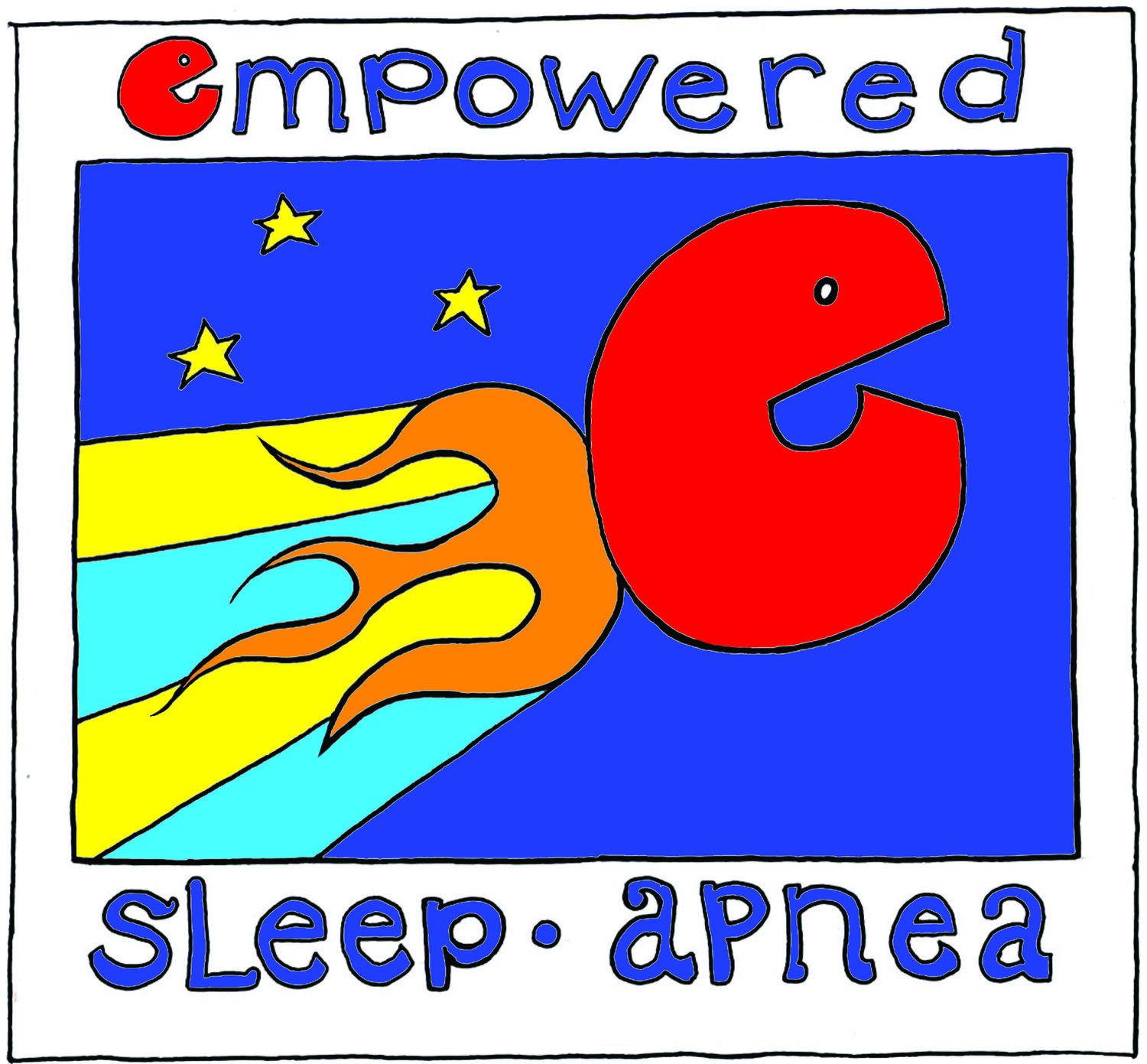A Brief Word About The Cartoons and Creative Process
June 9, 2022
By David E. McCarty, MD, FAASM (but you can call me Dave)
Dr. Ellen Stothard and I co-created the narrative & structure of Empowered Sleep Apnea using an expository conversational creative process, which was ultimately turned into a fun audio podcast you should listen to. Or perhaps I should say that we used that process to make a Podcast, that shaped itself into a Beautiful Blue Book that brings joy to all who hold it. The two transformed each other during development, actually.
The journey started when I decided to retire from the practice of clinical medicine and write a book. See, I wanted to write down all the lessons I’d learned during my 14-year journey as a patient-centered Sleep Medicine specialist. I’d picked up so much, you see? Learned so much. I wanted to write it all down, create a guide book of sorts, so that these lessons wouldn’t just…disappear.
The problem became the execution of it.
Each time I tried to write it down, something impossible and inexplicable happened. The essence of what I’d tried to capture just got…lost. Something about it just didn’t make sense. The act of writing it down turned it all into something lifeless.
Unapproachable.
All Work and No Play…
Somehow, my efforts just didn’t capture the spirit of the rollicking, scary, challenging, and rewarding adventure that is the journey of Sleep Apnea. I realized at that moment that to get the feeling right, the journey would have to be captured dynamically.
It had to be captured in flight.
It had to be captured in conversation.
The process Ellen and I used was pretty simple. We came to the recording studio with an idea of what we wanted to talk about. We wanted the power of conversation to reveal important patient-centered truths about Sleep Apnea, and we wanted to follow our sense of fun to see where it would lead us. When the dust would settle, I would sift through the audio, and find the parts that worked. A structure started to form.
I started drawing the cartoons in an effort to provide the conversations with some emotional background. This was important to me, to accurately depict what the whole process felt like to the people I cared for. I owed them that much, I felt. I wanted to get the feeling right.
As it happened, the cartoons helped to shape the conversations, leading to more cartoons, and more discussions. At some point, I realized it would be cool to have an actual map for the adventure.
And, just like that! the final format for the book clicked into place.
The cartoon character named Claudio Mahoney was born when I was an undergraduate student at Cal State Fullerton, slogging away my pre-med science requirements in two years of post-baccalaureate work, my bachelor’s degree in English Literature* sparkling away, brave and triumphant, on my bedroom wall.
*shout out to all you English Majors out there!
Claudio inhabited a cartoon strip called DarkPlaces, which ran in the school newspaper, The Daily Titan, four days a week, from 1990-1991. Claudio and his friends provided an outlet to all of the feelings galumphing through that interesting and disquieting phase of life: feeling lost, overwhelmed and powerless in a large system that everyone else seems to understand.
Wanting it all to make sense.
As I reflected on the journey that my patients traveled, with me as their guide, through this crazy place called Sleep Apnea, it struck me that there was no one better-suited to help tell this story.
I had to bring Claudio out of retirement.
Claudio, for whom things don’t always work out perfectly. Claudio, who tries hard, and who generally wants to do what’s right. Claudio, for whom the world is often just a pie in the face. A banana peel on the stairs. A grand piano being hauled into a penthouse apartment, with a fraying rope.
Yet, somehow, he still finds things funny. Somehow, he still figures out some bigger truths.
Thank you, Claudio, old friend.
It’s good to see you, again.
Dave
Boulder, Colorado
June, 2022




